Located in the southwestern part of Africa, Namibia is a remarkable country known for its unique landscapes, abundant wildlife, and diverse cultural heritage.
With its towering sand dunes, spectacular national parks, and fascinating ghost towns, Namibia offers an unforgettable experience to travelers. This article will take you through some of the best places to visit in Namibia.
Etosha National Park
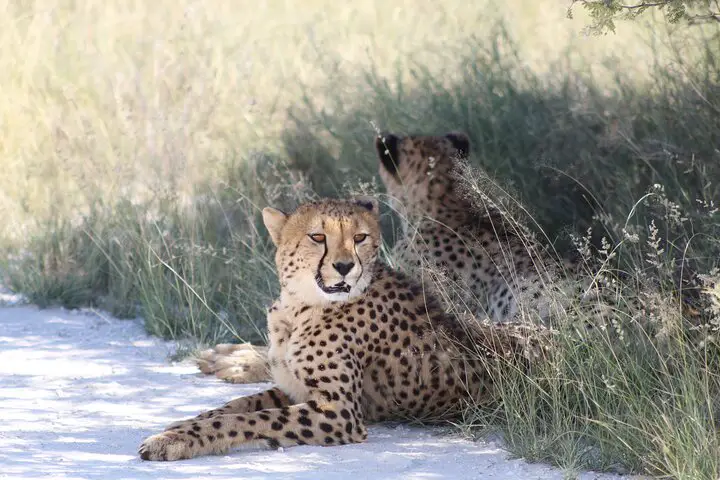
Etosha National Park, situated in northwestern Namibia, is one of the largest and most significant game reserves in Africa. Spanning an area of about 22,270 square kilometers, it encapsulates a vast salt pan that is so large it can be seen from space. This pan, known as the Etosha Pan, covers about 25% of the national park and is a breeding ground for a vast array of bird species.
Etosha National Park is renowned for its high density of wildlife, including some rare and endangered species. The park is home to hundreds of species of mammals, birds, and reptiles, including several threatened and endangered species such as the black rhinoceros. Elephant, lion, leopard, cheetah, wildebeest, giraffe, hyena, zebra, springbok, kudu, gemsbok, and eland are among the many animal species that roam the park. This makes the park a premier destination for wildlife viewing.
One of the unique features of Etosha National Park is its waterholes, some of which are floodlit at night. These waterholes are perfect places to observe animals, especially during the dry season when they gather to quench their thirst.
The park offers a range of accommodations to suit different budgets, from luxury lodges to basic camping sites. Most accommodations are situated near the waterholes, providing guests with exciting wildlife viewing opportunities.
Sossusvlei

Sossusvlei, located in the southern part of the Namib Desert, is one of Namibia’s most spectacular landmarks. This large, white, salt and clay pan is renowned for its towering red sand dunes, some of the highest in the world. The dunes’ rich red color, a result of iron oxidation, contrasts beautifully against the clear blue sky, creating a breathtakingly photogenic landscape.
One of the most iconic dunes in Sossusvlei is the ‘Big Daddy,’ standing at over 300 meters, it’s one of the highest dunes in the world. Climbing this dune can be quite a challenge, but the panoramic view at the top, overlooking a surreal desert landscape, is a rewarding experience.
Another notable area in Sossusvlei is Deadvlei, a white clay pan characterized by dark, dead camel thorn trees contrasted against the bright white pan floor. The trees are estimated to be approximately 900 years old but have not decomposed due to the dry climate.
Visitors to Sossusvlei can enjoy a variety of activities including dune climbing, hot air ballooning, nature drives, and star gazing. The region’s clear and unpolluted skies make it a perfect spot for astronomy enthusiasts.
Skeleton Coast
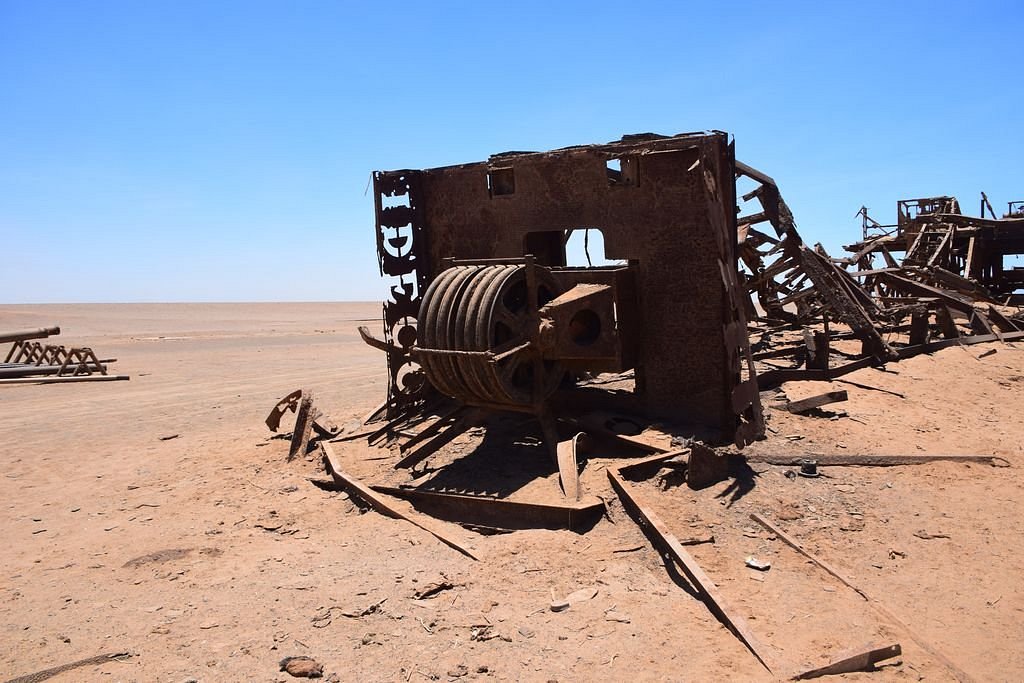
The Skeleton Coast, named for the whale and seal bones that once littered its shores, and the skeletal remains of the shipwrecks that have befallen it over centuries, is one of the most treacherous and desolate regions of the Atlantic Ocean.
Spanning the northern part of the Atlantic coast of Namibia and south of Angola from the Kunene River south to the Swakop River, it’s an eerie landscape where the dunes of the Namib desert meet the crashing waves of the Atlantic Ocean.
This coastline is notorious for its dense fogs and swift, offshore currents. These natural phenomena led to numerous shipwrecks over the centuries, lending the area an eerie and hauntingly beautiful landscape. Many of these wrecks can still be seen today, scattered along the shore, and have become a significant draw for photographers and explorers.
Visitor facilities are sparse, ensuring that the wilderness feel is preserved. There are a few lodges and campsites that cater to adventure tourists and offer activities such as game drives, hiking, and visits to local Himba communities.
Swakopmund
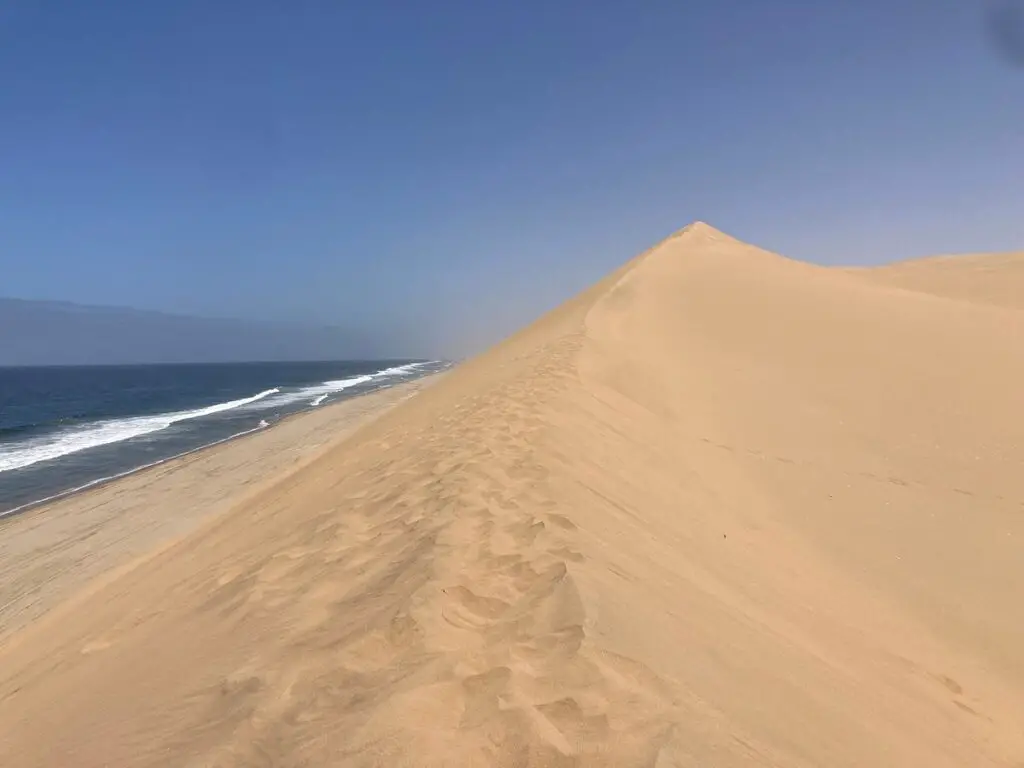
wakopmund, often referred to as “the playground of Namibia”, is a charming coastal town situated between the Atlantic Ocean and the Namib Desert. Founded by German colonists in 1892, the town’s architecture is heavily influenced by its colonial history, featuring Germanic-style buildings that give it a distinctive and unique appearance within the African continent.
Swakopmund serves as a holiday destination for both locals and tourists who are drawn by its pleasant summer climate, fascinating Germanic architecture, and its wide array of adventure activities. It’s known for its well-preserved German colonial buildings, particularly the pink-and-green painted Swakopmund Lighthouse and the elegant Swakopmund Railway Station, now a luxury hotel.
One of the most visited places in Swakopmund is the Jetty, a restored old pier that extends into the ocean, offering beautiful views of the town and the Atlantic. The Mole, an artificial beach created in the early 1900s, is another popular spot among locals and tourists.
Damaraland

Damaraland, located in the northwest region of Namibia, is one of the most scenic areas in the country. Known for its dramatic landscapes of rugged mountains, vast desert plains, and ancient rock formations, Damaraland offers an array of unique experiences that set it apart from other tourist destinations.
One of Damaraland’s highlights is the presence of desert-adapted elephants. These unique creatures have adapted to survive the harsh desert conditions and are often seen wandering through the dry riverbeds. Alongside these majestic beasts, Damaraland is also home to a variety of other wildlife species, including black rhinos, oryx, and a host of bird species.
Damaraland also showcases the Petrified Forest, an accumulation of enormous fossilized tree trunks estimated to be about 260 million years old. This site provides a captivating insight into the prehistoric landscapes that once dominated the area.
Windhoek

Windhoek, the capital and largest city of Namibia, serves as the country’s administrative, economic, and cultural center. Nestled among rolling hills, bordered by the Eros Mountains in the east, the Auas Mountains to the south and the Khomas Hochland in the west, Windhoek is a vibrant city that seamlessly blends African and European cultures.
The National Museum of Namibia, located in the old German fort of Alte Feste, offers a comprehensive overview of Namibia’s history, anthropology, and archaeology. The Independence Memorial Museum, a significant modern landmark, provides a detailed portrayal of the country’s struggle for independence.
Windhoek’s compact city center is easily explored on foot. The pedestrian-friendly Post Street Mall houses a variety of shops, street vendors, cafes, and restaurants. This is also where you’ll find the Gibeon Meteorites, a display of large meteorites that fell in southern Namibia more than 600 million years ago.
Fish River Canyon
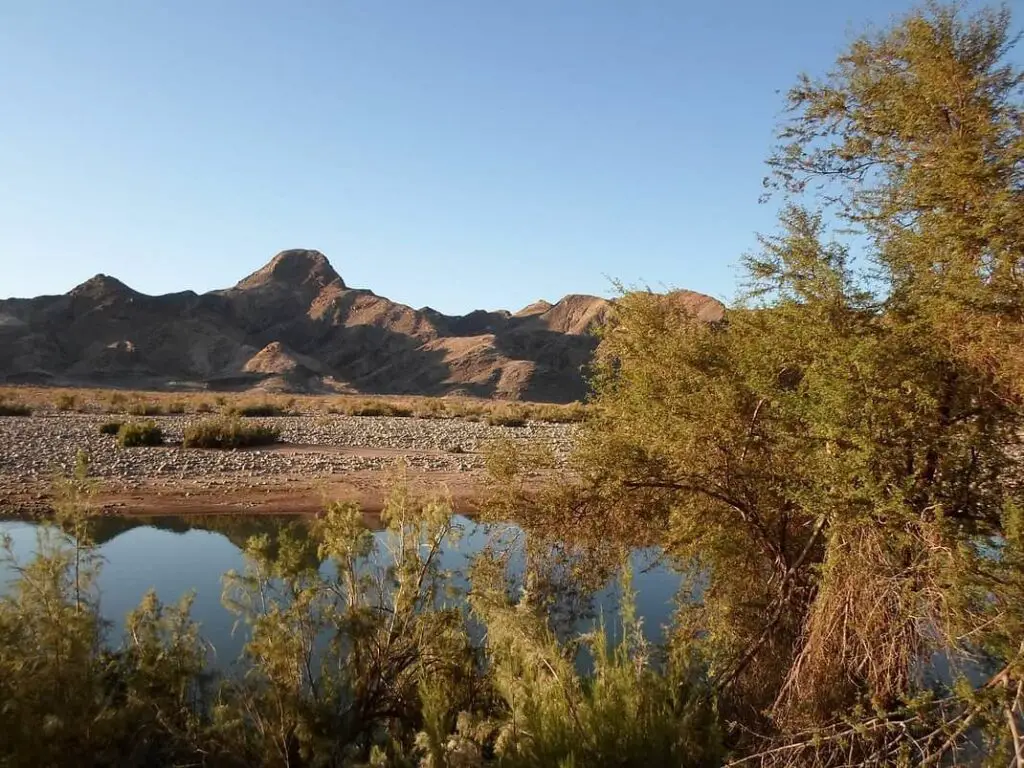
The Fish River Canyon, located in the south of Namibia, is one of the country’s natural treasures and one of the most awe-inspiring geological features in Africa. It is the second-largest canyon in the world after the Grand Canyon in the United States, stretching approximately 160 kilometers in length and reaching widths of up to 27 kilometers and depths of up to 550 meters.
The canyon boasts a stunning landscape of jagged cliffs, dramatic ravines, and rolling plains that have been carved out by the Fish River over hundreds of millions of years. The river itself is the longest interior river in Namibia and winds its way through the bottom of the canyon, creating a winding ribbon of water that provides a stark contrast to the arid landscapes above.
Aside from its natural beauty, the Fish River Canyon offers an array of activities for visitors. The most popular is the Fish River Canyon Hike, a challenging multi-day trek that covers roughly 85 kilometers of rugged, rocky terrain.
This trek, typically completed over 4-5 days, is only open during the cooler months (May to September) due to extreme heat during the rest of the year. It’s important to note that no rescue services are provided, and hikers need to be entirely self-sufficient, carrying their food, water, and camping equipment.
Caprivi Strip

The Caprivi Strip, now officially known as the Zambezi Region, is a narrow, panhandle-like protrusion of Namibia that extends eastward for about 450 kilometers between Botswana to the south and Angola and Zambia to the north. It ends at a quadripoint where Namibia, Botswana, Zambia, and Zimbabwe converge, making it a unique geographical feature.
Unlike the rest of Namibia, which is predominantly arid, the Caprivi Strip is blessed with ample rainfall and encompasses rich wetland ecosystems, including parts of the Okavango Delta and the Zambezi River floodplain. This abundant water supply supports a lush, green landscape and a higher diversity of wildlife than other parts of Namibia.
The area boasts several national parks and protected areas. Bwabwata National Park, Mudumu National Park, and Mamili (Nkasa Lupala) National Park are known for their diverse range of animal species, including elephants, buffalos, antelopes, and a variety of birds.
Walvis Bay
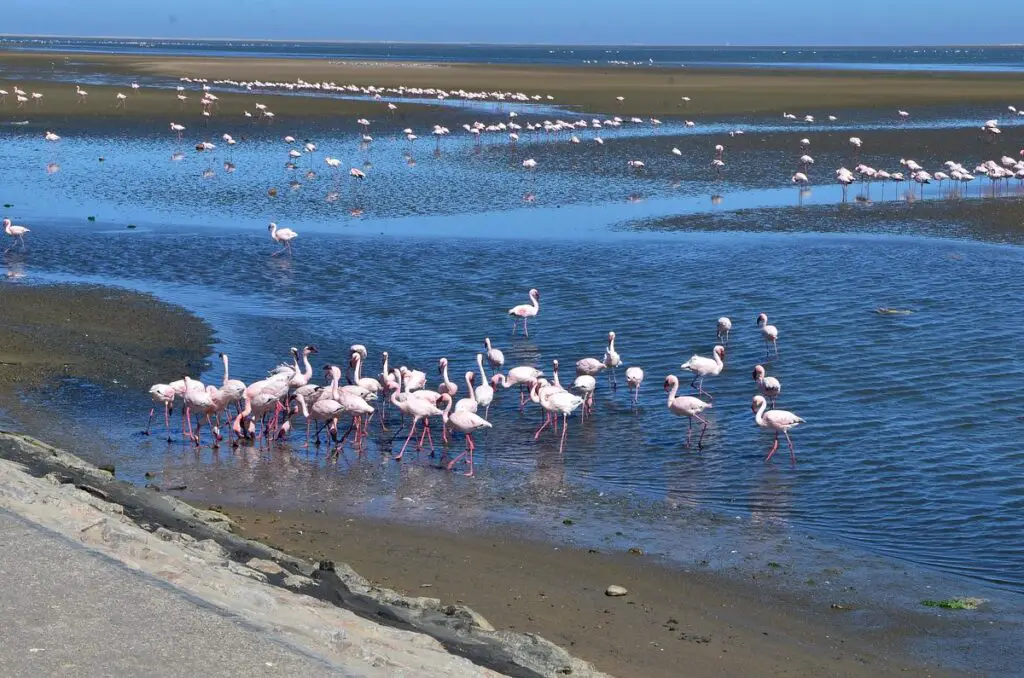
Walvis Bay, meaning ‘Whale Bay’ in Afrikaans, is a bustling port city located on the coast of western Namibia. It’s the country’s main harbor and one of the most significant commercial ports in southern Africa. Named for the abundance of whales that once populated its waters, Walvis Bay is now known for its marine life, stunning landscapes, and adventure activities.
Walvis Bay’s lagoon is a proclaimed Ramsar site, meaning it’s recognized as a wetland of international importance. The rich, nutrient-filled Benguela current in the Atlantic Ocean feeds a wealth of marine life in the lagoon, making it a paradise for birdwatchers. Flamingos, pelicans, and various migratory bird species are frequent visitors. Further, boat tours offer opportunities to see dolphins, seals, whales, and even sharks.
Part of the Namib Naukluft Park, Sandwich Harbour, where towering sand dunes meet the Atlantic Ocean, is a short drive from Walvis Bay. This area is one of Namibia’s most visually stunning landscapes. Four-wheel-drive tours and guided walks are popular ways to explore the dunes and the abundant wildlife.
Adventure enthusiasts can enjoy a range of activities in and around Walvis Bay. These include sandboarding, quad biking in the desert, sea kayaking, and kite-surfing. The constant wind makes Walvis Bay an excellent location for wind and kite surfing.
Kolmanskop Ghost Town

Kolmanskop, also spelled as Kolmannskuppe, is a ghost town in the Namib Desert in southern Namibia. It’s located a few kilometers inland from the port town of Lüderitz. Known for its diamond past and German-style architecture, the town has a unique and haunting history that attracts tourists from all around the world.
Kolmanskop’s story begins in 1908 when a worker found a diamond in the area. This discovery sparked a full-scale diamond rush and led to the construction of the town. In its heyday, Kolmanskop was one of the richest towns in Africa, boasting amenities like a hospital, ballroom, power station, school, theater, and even the first tram in Africa.
During the diamond boom, German miners established and maintained the town. This influence is still evident today in the architectural style of the dilapidated buildings. The German language was also prevalent, and the town had a distinctly German character, with German cuisine and traditions.
The town started to decline after World War I when the diamond-field slowly exhausted. The discovery of the richest diamond-bearing deposits ever known, located further south near the Orange River, led to a mass exodus, leaving the town abandoned by 1956.
Today, Kolmanskop is a ghost town where the desert is gradually reclaiming the abandoned buildings. Sand fills the rooms, and the once grand and elegant houses are now crumbling ruins.
Despite its eerie, desolate state, Kolmanskop attracts many tourists and photographers who come to see the deserted buildings and the encroaching sand. The site has also served as the backdrop for several films and television series due to its unique and eerie scenery. Guided tours are available, and there is a museum that provides insight into the town’s history.


